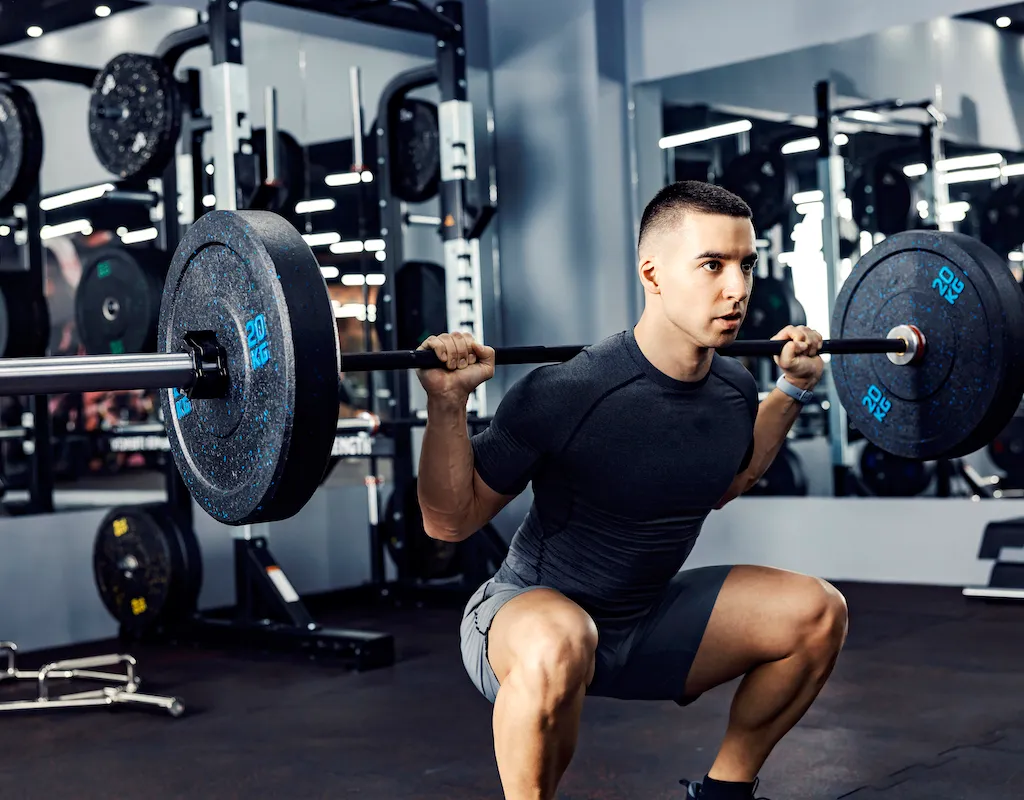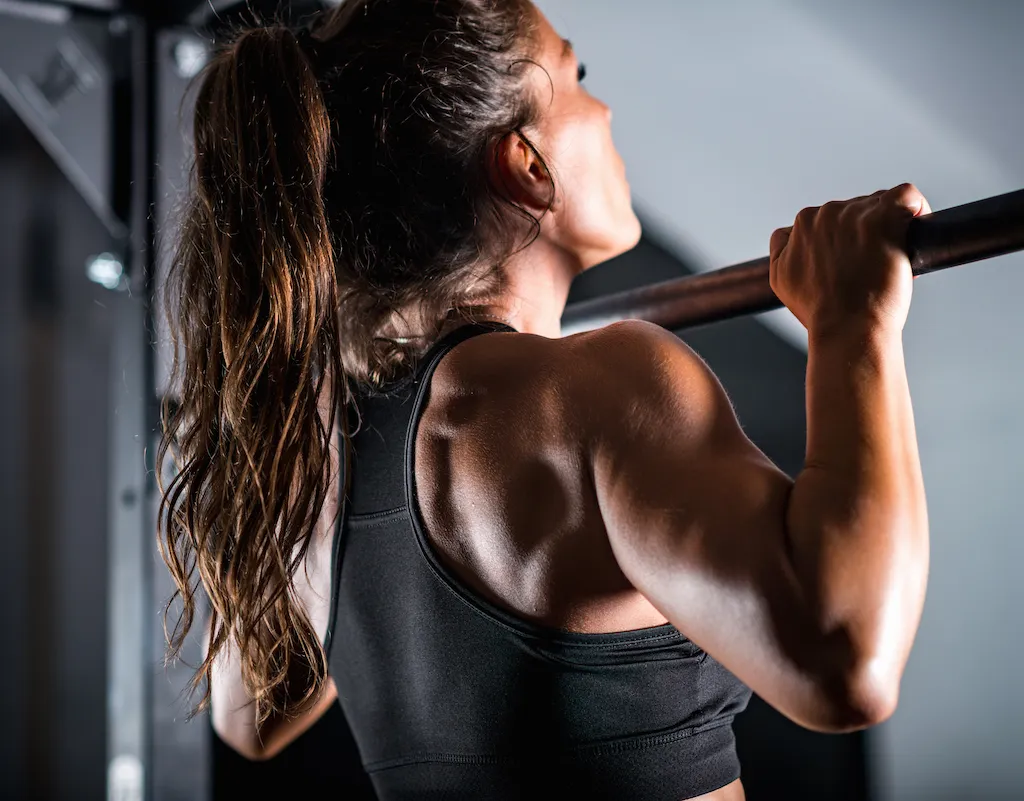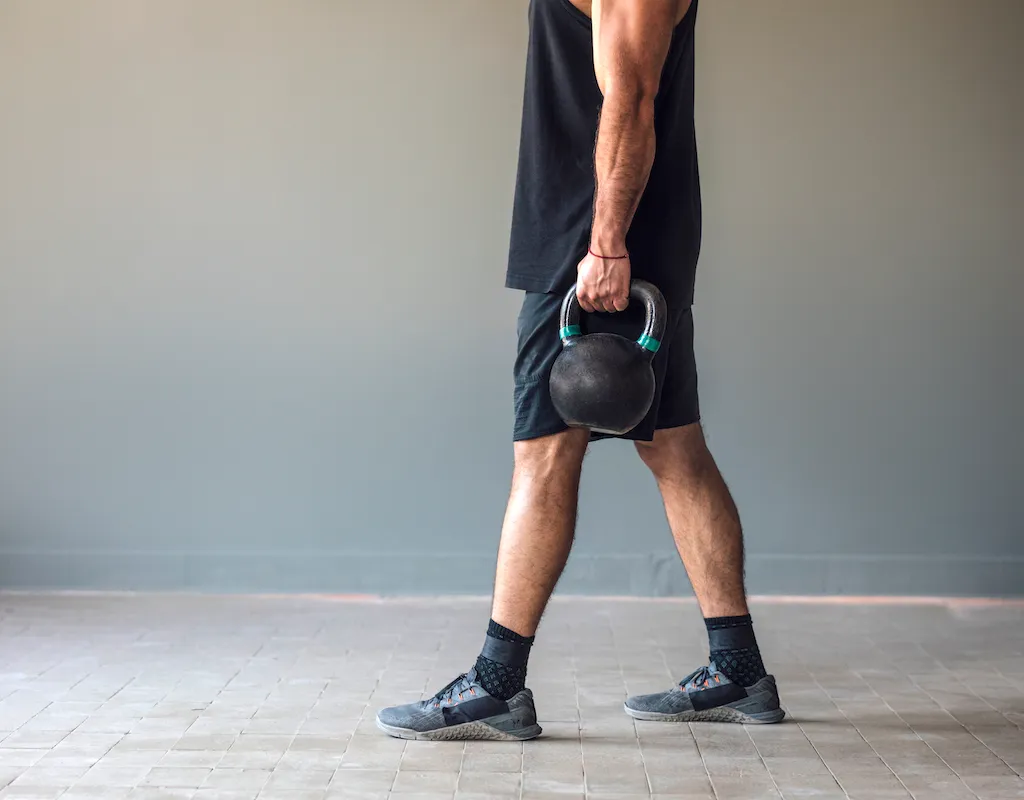To put it simply, strength and conditioning (aka S&C) has the potential to elevate your swim, bike and run performance as well as reducing injury along the way.
For our Olympic and Paralympic athletes, for example, S&C plays a vital role in keeping the musculoskeletal system healthy, which allows them to train at the required volumes and intensities.
This could be anything from keeping grumpy Achilles tendons under control or ensuring lower backs are strong enough to cope with bike positioning.
Whatever it is, S&C plays a particular role in tackling certain performance problems. For example, specific programming can be used to improve pull strength to give you a head-start in the swim, or lower limb focus to enhance power on the bike, or reactivity off the floor to improve run performance.
Some S&C is better than none, but being specific on your goals and what you want S&C to focus on is important to ensure you’re not wasting time that could be spent ticking off swim, bike and run.
So once you’ve decided on your specific goals ask yourself: could I better optimise my swim, bike or run training to address this problem? Make those changes first and then come back to S&C for specific interventions if the problem persists.
And finally, always consult with a healthcare professional before trying any of the exercises below.
10 ways to improve your strength for triathlon racing
From chin-ups to pogos, calf raises to reverse flys, here are 10 ways to target the right strength and conditioning work for swim, bike and run…
1. Use small pockets of time
You may be strapped for time to get in your training as it is, so the thought of adding S&C into the mix is overwhelming. But S&C doesn’t have to be multiple hour-long sessions every week.
Using smaller pockets of time post SBR may not be completely optimal, but provides you with a realistic way of achieving some regular resistance training.
2. Do pogos
Pogos are a great, equipment-free introduction to something called plyometrics. Plyometrics are group of exercises that focus on fast ground-contacts. Think rapid movements where you spend as little time on the ground as possible. These help you improve absorption and transfer of force at your ankles.
To pogo: jump into the air, land, then bounce back into the air as quickly as possible and then repeat. This is an ankle-dominant jump, so try not to bend your knees too much. Imagine the floor is lava and you need to rebound as quickly as possible.
Once you have the hang of it, think about pulling your toes to your shins when in the air. Try adding sets of 10-20 pogos into your run warm-up or at the start of your gym session.
3. Overload the nervous system

If strength is your goal then you need to overload your nervous system. To do this, use multi-joint exercises such as squats, leg press, Romanian deadlift, pull-up and bench press.
With these movements you’ll be able to load more weight which will stress the body to a greater extent. Keeping reps low is important so you can keep the intensity high.
Try to complete 3-5 sets of 2-5 reps at a heavier weight with plenty of rest between sets. Most importantly, ensure you’re maintaining safe technique and have built up a base before trying higher intensities.
4. Pick the right exercises
Improved muscular endurance helps to condition your muscles to repeatedly contract over a prolonged period of time, which relates directly to the demands of swim, bike and run.
When trying to improve your muscular endurance, pick exercises where you can specifically target the desired muscle. The idea is to create metabolic fatigue, so perform 3-6 sets of 12-20 repetitions to achieve an adequate stimulus.
5. Do calf raises
Your calf is made up of a large flat muscle called soleus and the overlying gastrocnemius, both of which are connected to the foot via the Achillies tendon.
To target soleus, complete bent knee calf raises (or seated), and to hit gastrocnemius ensure your knee is straight. Soleus is particularly active during running.
6. Pull up to improve your swim

If swimming is what you want to improve then vertical pulling is something you should be looking to incorporate into your sessions.
Pull-ups with palms facing away (pronated) will challenge the latissimus dorsi, which is a key muscle you will use in the pull phase of your stroke.
If you can’t do a pull-up, try band-assisted variations or horizontal pulling (e.g. seated row, bent-over row). These horizontal exercises can also be great to keep consistency in if you’re working through some shoulder pain.
7. Keep the shoulders happy
Thousands of overhead movements happen through a swim session. Pushing and pulling movements in the gym will help you along the way to building robust shoulders but you may need some more direct accessory work to keep your shoulders happy.
The rotator cuff helps to keep your shoulder where it needs to be. To isolate the rotator cuff you will want to use an external rotation at your side or at shoulder height.
Move through a full range of motion without compensating through other areas such as spinal extension. Other exercises such as face-pulls and reverse flys will challenge the rotator cuff through more complex movements.
8. Do the ‘anti’ movements

Your core is more than just rectus abdominus, it’s actually all the muscles that support your spine and keep you upright.
Instead of hundreds of sit-ups, concentrate on ‘anti’ movements – movements that challenge you to maintain a fixed position.
A suitcase-carry, where you hold a heavy dumbbell and walk tall and slow, challenges you to stabilise through your whole body and resist lateral flexion. This also doubles up as great practice for bringing in the shopping!
9. Eat, drink and sleep right
Nutrition, hydration and sleep are the key players here. Protein is a key driver for muscle repair so aim to consume 20-40g of protein post-gym session to support the hormonal pathways you will have triggered after doing resistance training.
Seek out a SENr registered nutritionist for detailed support. As for sleep, that requires its own feature, but check out the below links for further advice.
10. Find an accredited coach
If you have a specific performance need, consider accessing an accredited S&C coach who
can work with you (and your triathlon coach if you have one).
Top image credit: Getty Images
